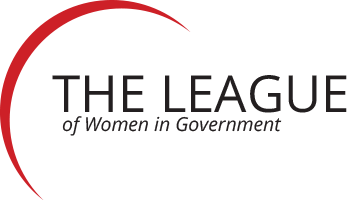By Cheryl Horvath, Fire Chief, Mountain Vista Fire District, Arizona
Recently I was chatting with a number of public safety women regarding the lack of sufficient numbers of women in fire and law enforcement. A number of us who have been in the public safety arena for many years expressed frustration over a common piece of advice that we hear from many people inside public safety and public management: “Don’t worry. Things will chane. You just need to be patient.”
Our small group’s common reaction to this was “Really? It’s been 40 plus years in the fire service since women first came on the job and you are telling us to be patient? Bull…” Clearly some of us are reaching the point of not only disbelief, but lack of belief completely. Is it possible the fire service will never change? The answer very clearly is a resounding “yes!”
As always I tend to get very introspective at times like this. Thankfully while perusing the bookstore recently, I came across the latest issue of the Harvard Business Review (HBR). The cover of the July-August edition caught my eye: “Diversity: Most programs don’t work. Here’s what to do about it.” What I found in the magazine was eye-opening and in some ways, comforting.
First, the bad news. The Fire Service does have a bias towards diversity, as do most other professions. The reason why is that for the most part, “people rebel against rules that threaten their autonomy.” Despite mandatory diversity training, minority status within organizations has not changed, and in some cases, has gotten worse. Researchers found that “people often respond to compulsory courses with anger and resistance – and many participants actually report more animosity toward other groups afterward.” I can recall a civilian employee in a human resources department falling asleep in a diversity workshop and complaining that she was bored. Being forced to do something does not work and does not create change.
Frankly, we all have bias and need to be able to admit that. There are things that happen today in society that I have struggled to accept because these things are so different than what my expectations have been in the past. Yet I find myself on a daily basis learning to accept these “differences” because they are now the “new normal.” The key is that I choose to accept those differences and am not being forced to do so.
More bad news regarding diversity is that regulating hiring/promotion decisions and implementing a grievance system also do not work. This is particularly disheartening news since many of us hope that grievance systems will at least make employees heard and ultimately, whole. The research cited by HBR indicates that many companies (40 percent) use mandatory hiring tests designed to assess skills. Unfortunately many managers ignore the results and one researcher found that “decision makers cherry-picked results, amplifying bias more so than eliminating it.”
In one example, a hiring team “paid little attention when white men blew the test and close attention when women and blacks did.” Another example given was during deliberations regarding first-round candidates. Generally speaking, the hiring team had little to say about the “rock stars” or the “rejects.” For the majority of the time, the team discussed candidates in the middle, “which is where sterotypes about women and minorities came into play.” The common denominator for moving candidates to the “yes” or “no” pile was communications skills (sometimes referred to as “polish”).
“Black and Hispanic men were often seen as lacking polish and moved to the reject pile, even when they were strong in other areas, whereas white men who lacked polish were deemed coachable and kept in the running. A similar pattern emerged among men who appeared shy, nervous, or understated. Nonwhites were rejected for being unassertive, but in whites, modesty was seen as a virtue. Among candidates who made minor mistakes in math, women were rejected for not having the right skills, and men were given a pass – interviewers assumed they were having an “off” day.”
There were numerous examples given in the article. The bottom line is that “evaluators advocated most fervently for people who were most like them.” Given that the fire service is less than 4 percent women today, this is not much of a surprise to many of the women.
Grievance procedures are not working either. Many managers who are the subject of grievances default to retaliation instead of changing their behavior (45 percent of the 90,000 discrimination complaints filed with the EEOC last year were charges of retaliation). As soon as people see that a grievance brings retaliation or is not impacting behavior, they do not speak up. The unintended consequence of this is that we think (ASSUME) there is nothing wrong because we receive few complaints. Nothing could be further from the truth.
“For beliefs to change, people’s experiences have to change first.” Iris Bohnet |
Thankfully there are solutions we can turn to. In short, we need to engage people, expose people to different groups (see Fire service has a leadership crisis for more on expanding your network), and develop systems for social accountability. Engaging people means to invite them to be part of the solution (in other words, a positive approach to involving the managers versus the negative “mandatory” approach). Companies who initiated college recruitment programs and invited managers to participate found that the managers willingly participated, took their responsibilities seriously, and ultimately drove higher numbers of women and minorities back into the companies. Another positive method of engaging people is through mentorship programs. While only about 10 percent of companies have mentoring programs, those that do saw a 9 to 24 percent increase in women and minorities into management positions.
Exposing people to different groups is accomplished in a number of ways. Self-managed teams and rotating people into different positions (cross-training) are two primary examples. Both of these methods increase “contact among diverse types of people.” The key characteristic with these employee groups or self-managed teams is that everyone is an equal and research indicates that “working side-by-side breaks down stereotypes, which leads to more equitable hiring and promotion.”
A correlation to the fire service is employee groups who are tasked with researching and recommending a large capital purchase or fire prevention initiative; labor/management committees; or rotating first-line supervisors into administrative positions. In my experience, company officers rotated into training assignments return to the field with a much broader perspective of the organization and the fire service.
Developing systems for social accountability is another way of promoting transparency and feeding our need to look good publicly. Managers know that the company’s diversity numbers will be exposed so there is an innate pressure to perform. CEO’s assemble “diversity task forces” made up of department heads (voluntary) and members of underrepresented groups. These task forces meet to evaluate diversity numbers (i.e. data) in departments and the company as a whole. They brainstorm where the issues are and then take back solutions to their respective departments. “Accountability theory suggests that having a task force member in a department will cause managers in it to ask themselves, ‘Will this look right?’ when making hiring and promotion decisions.”
In short, when people know they have to be accountable for their decisions, they will make better decisions (translation = less bias).
How this information translates to the fire service is for us to determine. We are not as unique as we say we are. This research indicates that as human beings our biases are the same as those in other professions and we are facing the same challenges when it comes to bringing more diversity into our organizations. We have the ability to convert negative-perception diversity programs into positive employee engagement opportunities. And, just as we want to rely on data to drive our response systems, which should be just as willing to rely on data to drive our human capital systems. Let’s be willing to count everything, not just the data that makes us look good.
_____
Cheryl Horvath is Fire Chief of the Mountain Vista Fire District in Arizona and a 24 year veteran of the fire service. She is a past president of the International Association of Women in Fire and Emergency Services, and served on the International Association of Fire Chiefs’ FRI program planning committee. She served as an instructor with the Illinois Fire Service Institute for 15 years, teaching in recruit academies, live fire and technical rescue programs, and management courses. Currently Chief Horvath is an adjunct instructor for the University of Florida. She is also the co-founder of Camp Fury, a public safety camp for high school girls. Chief Horvath is the Board Chair for the Girl Scouts of Southern Arizona, and a director o the January 8th Memorial Foundation. Chief Horvath holds a Master’s Degree in Public Administration from Ana Maria College.
You can follow Chief Horvath on Twitter @ChiefCH or learn more about the department on the district website: https://mountainvistafire.org
Article References
Burrell, L. (2016). We Just Can’t Handle Diversity. Harvard Business Review, 71-74.
Dobbin, F., & Kalev, A. (2016). Why Diversity Programs Fail. Harvard Business Review, 53-60.
Morse, G. (2016). Designing a Bias-Free Organization. Harvard Business Review, 63-67.





